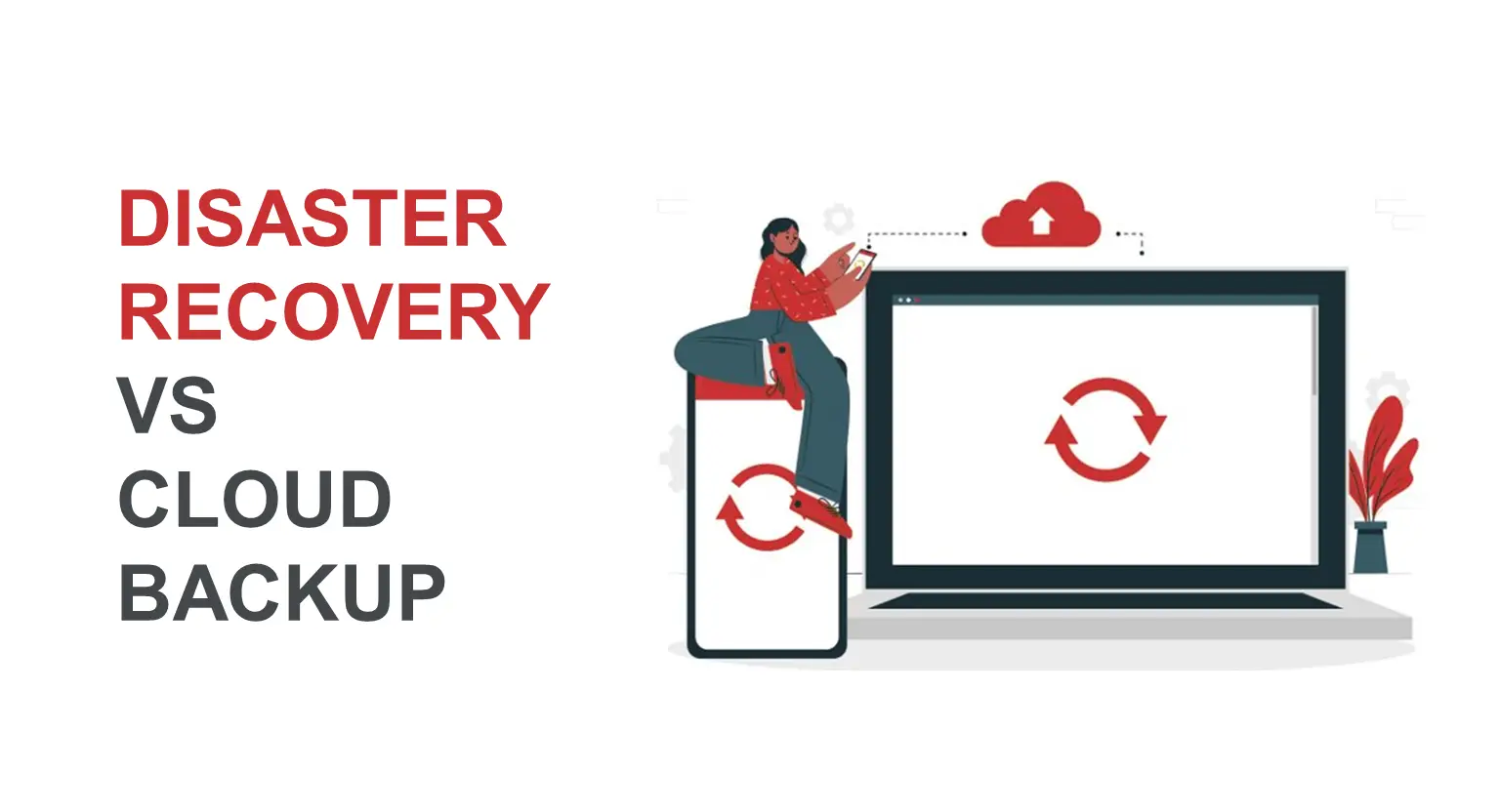Disaster Recovery VS Cloud Backup

1 Minutes 54 Seconds | 2983 views
Listen This Blog Now!
Introduction
In the modern world, security breaches and data loss are becoming more frequent occurrences.For a company to survive, all an organization's information must be always safe and accessible. Given this information, the significance of backups cannot be overestimated.
Backups, whether they be cloud backups or on-prem, are an essential component of every company's IT strategy, but they are not the same as a disaster recovery plan. You may establish efficient strategies for preventing the effects of downtime and business disruptions by distinguishing backup from disaster recovery.
What are the main distinctions between disaster recovery and backup?
When disaster recovery and backup are compared, there are several key distinctions between the two:
-
Different Purposes: Backups are most useful when you need to access a lost or damaged file or item, like a PowerPoint presentation or an email. Backups are frequently utilised for things like data retention or long-term data archiving. However, disaster recovery is the best option if you want your company to quickly resume operations following an unexpected tragedy.
-
Distinct RTO and RPO: Any organisation must establish Recovery Time Objectives (RTO) and Recovery Point Objectives (RPO). Backups are not appropriate for business-critical data that needs to be swiftly recovered after a disaster since they have longer RTOs and RPOs. On the other hand, disaster recovery entails replicating your crucial virtual machines to quickly perform failover, if necessary. As a result, DR can support substantially shorter RTOs and RPOs.
-
Resource Allocation: Backups typically just need a little amount of attention and storage space because they are compressed. On the other hand, disaster recovery needs a second site with an IT infrastructure that is always prepared for a potential failover at any moment and is fully functioning.
-
Comprehensive Planning: A company only needs to establish and adhere to its Recovery Point Objectives and data retention policies for the backup process to be simple. Disaster recovery causes an instant increase in complexity. A firm must assess the relevance of business applications and prioritise the recovery order of the VMs hosting those apps in addition to the need for more resources.
Conclusion
Avoid waiting for calamity to strike. Backup and disaster recovery plans are essential for most enterprises to maintain the company's future. Businesses must address IT recovery by developing an all-encompassing approach that includes people, process, and technology. Plans for backup and disaster recovery are only useful if they are created, implemented, and tested well in advance of when they are required.
Contact CyberNX for disaster recovery service that delivers quick failover of your critical workloads to the cloud, improving your business continuity capabilities.
Table Of Content
- Introduction
- What Are The Main Distinctions Between Disaster Recovery And Backup?
- Different Purposes
- Distinct RTO and RPO
- Resource Allocation
- Comprehensive Planning
- Conclusion
Introduction
In the modern world, security breaches and data loss are becoming more frequent occurrences.For a company to survive, all an organization's information must be always safe and accessible. Given this information, the significance of backups cannot be overestimated.
Backups, whether they be cloud backups or on-prem, are an essential component of every company's IT strategy, but they are not the same as a disaster recovery plan. You may establish efficient strategies for preventing the effects of downtime and business disruptions by distinguishing backup from disaster recovery.
What are the main distinctions between disaster recovery and backup?
When disaster recovery and backup are compared, there are several key distinctions between the two:
-
Different Purposes: Backups are most useful when you need to access a lost or damaged file or item, like a PowerPoint presentation or an email. Backups are frequently utilised for things like data retention or long-term data archiving. However, disaster recovery is the best option if you want your company to quickly resume operations following an unexpected tragedy.
-
Distinct RTO and RPO: Any organisation must establish Recovery Time Objectives (RTO) and Recovery Point Objectives (RPO). Backups are not appropriate for business-critical data that needs to be swiftly recovered after a disaster since they have longer RTOs and RPOs. On the other hand, disaster recovery entails replicating your crucial virtual machines to quickly perform failover, if necessary. As a result, DR can support substantially shorter RTOs and RPOs.
-
Resource Allocation: Backups typically just need a little amount of attention and storage space because they are compressed. On the other hand, disaster recovery needs a second site with an IT infrastructure that is always prepared for a potential failover at any moment and is fully functioning.
-
Comprehensive Planning: A company only needs to establish and adhere to its Recovery Point Objectives and data retention policies for the backup process to be simple. Disaster recovery causes an instant increase in complexity. A firm must assess the relevance of business applications and prioritise the recovery order of the VMs hosting those apps in addition to the need for more resources.
Conclusion
Avoid waiting for calamity to strike. Backup and disaster recovery plans are essential for most enterprises to maintain the company's future. Businesses must address IT recovery by developing an all-encompassing approach that includes people, process, and technology. Plans for backup and disaster recovery are only useful if they are created, implemented, and tested well in advance of when they are required.
Contact CyberNX for disaster recovery service that delivers quick failover of your critical workloads to the cloud, improving your business continuity capabilities.
Share this on: